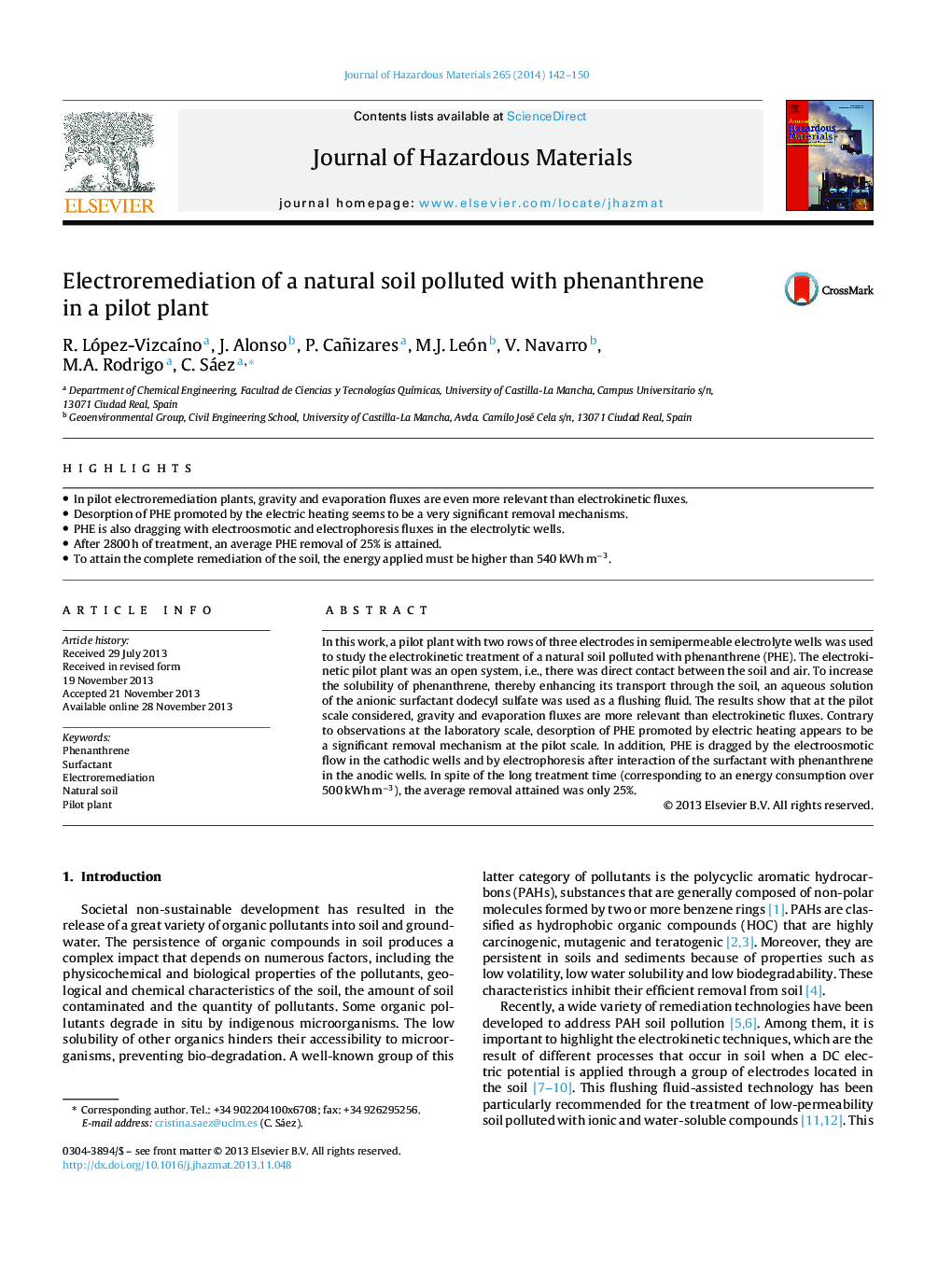| Article ID | Journal | Published Year | Pages | File Type |
|---|---|---|---|---|
| 576944 | Journal of Hazardous Materials | 2014 | 9 Pages |
Abstract
In this work, a pilot plant with two rows of three electrodes in semipermeable electrolyte wells was used to study the electrokinetic treatment of a natural soil polluted with phenanthrene (PHE). The electrokinetic pilot plant was an open system, i.e., there was direct contact between the soil and air. To increase the solubility of phenanthrene, thereby enhancing its transport through the soil, an aqueous solution of the anionic surfactant dodecyl sulfate was used as a flushing fluid. The results show that at the pilot scale considered, gravity and evaporation fluxes are more relevant than electrokinetic fluxes. Contrary to observations at the laboratory scale, desorption of PHE promoted by electric heating appears to be a significant removal mechanism at the pilot scale. In addition, PHE is dragged by the electroosmotic flow in the cathodic wells and by electrophoresis after interaction of the surfactant with phenanthrene in the anodic wells. In spite of the long treatment time (corresponding to an energy consumption over 500 kWh mâ3), the average removal attained was only 25%.
Related Topics
Physical Sciences and Engineering
Chemical Engineering
Chemical Health and Safety
Authors
R. López-VizcaÃno, J. Alonso, P. Cañizares, M.J. León, V. Navarro, M.A. Rodrigo, C. Sáez,
